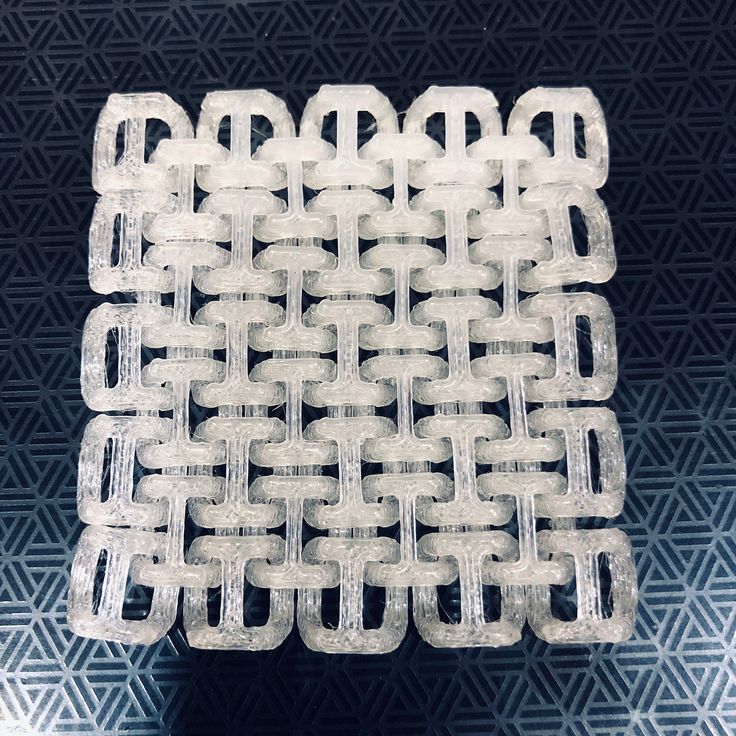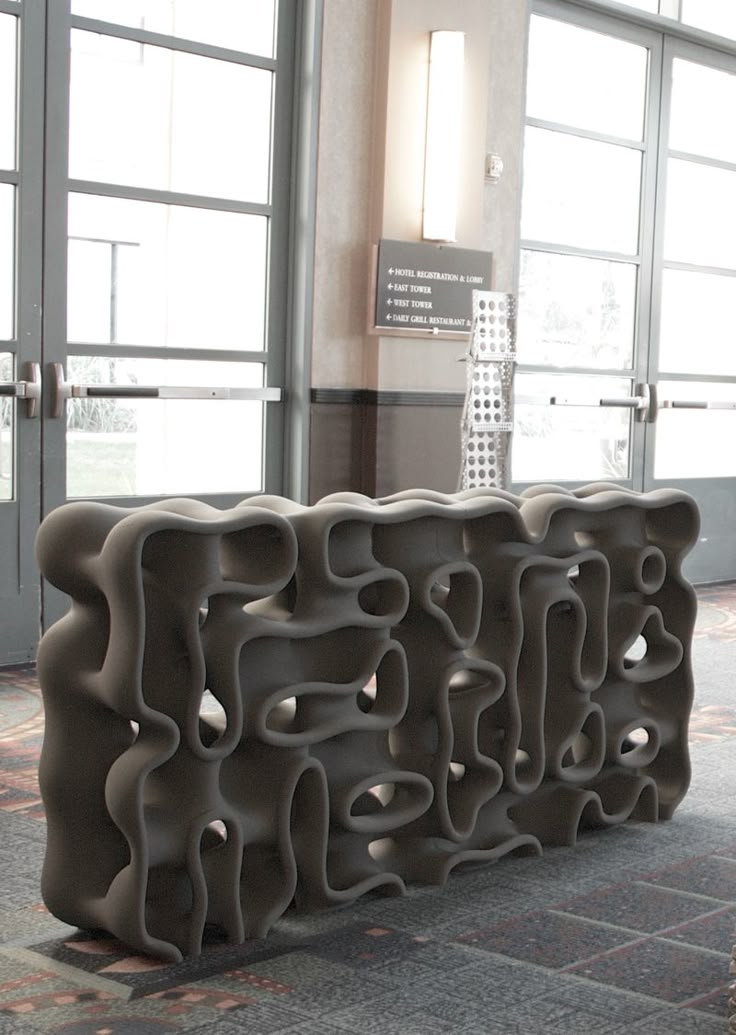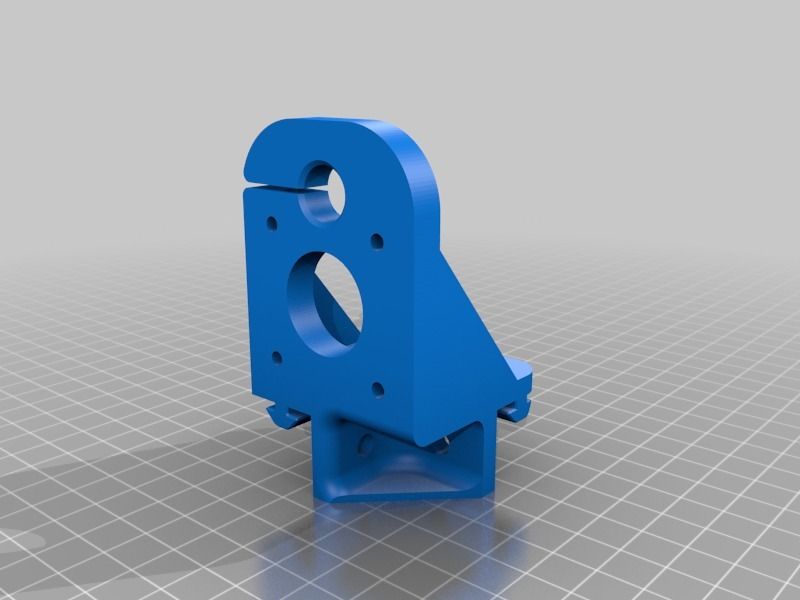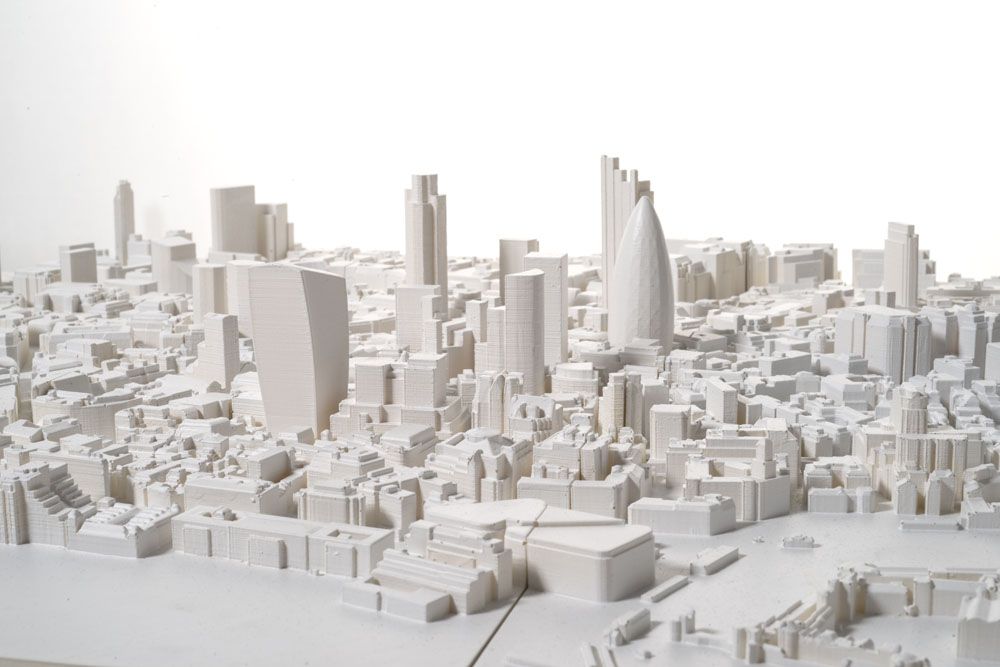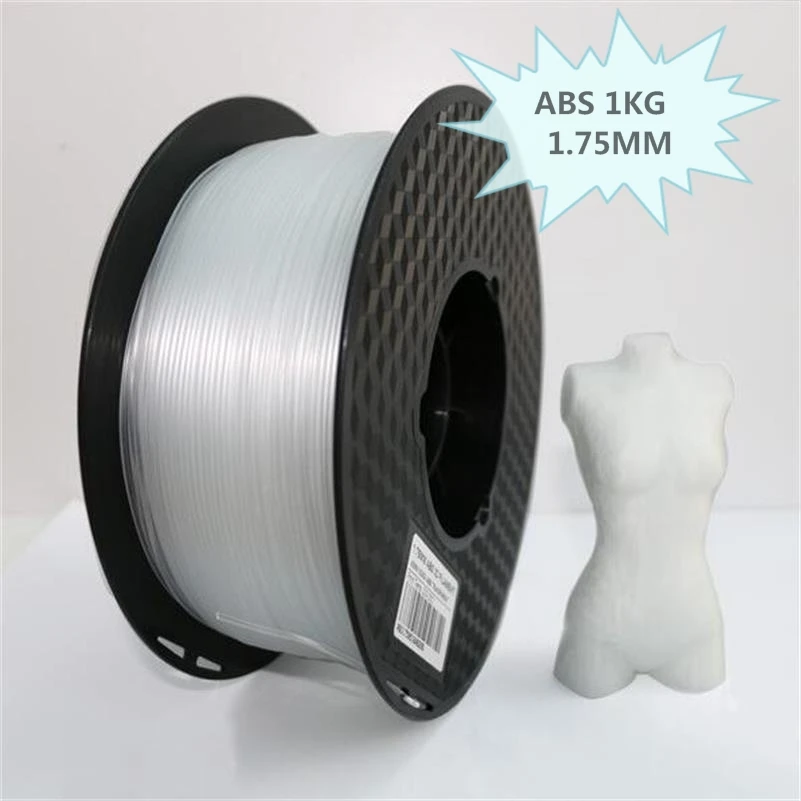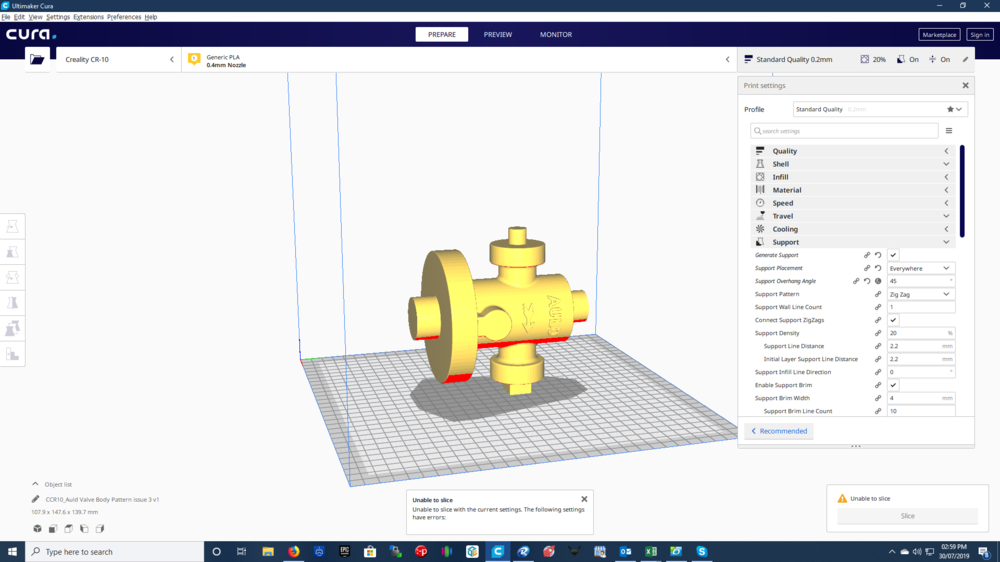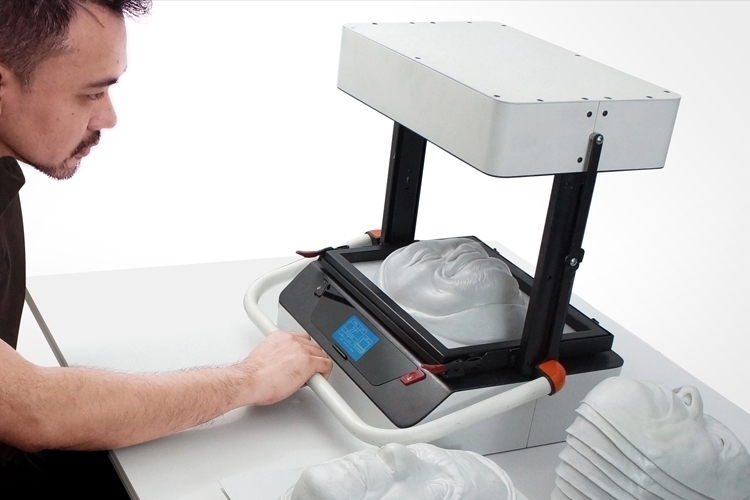3D printing fabrics
3D printing on fabric - Art and new techniques
3D printing on fabric: an innovative technique
3D p3D printing always surprises us with its wide range of applications: here, we’ll discover a new technique to create shapes. It’s an innovative way to design: algorithms are used to generate patterns of curves that, through tensions, develop structures.
Design is always influenced by manufacturing, and the change in a process also changes the way to think about shapes that can be reached. The progress of technology permits to rethink of esthetics and creates new cultural values.
Can 3D printers print on fabric?
3D printers can print on fabric, and It is effortless to do! You can easily create new shapes or give a new life to your old fabrics with any printer you have. Here are some tips to print and some case studies from which you can get inspiration.
How to 3D print on fabric
3D printing on fabric is easy, and it doesn’t require many other additional components. The only things you need are pins and, in some cases, a platform to raise the printing bed. In this workshop, students learned how to print on textile with their small printers, Delta WASP 2040 PRO. Trying small pieces before shifting to a larger scale is really useful.
The more difficult part is the design process: when you print you don’t see the final result until you release the tensions of the pins on the textile. This can be really exciting, for the continous experiments and the discovery of new shapes. It’s a totally different way to design.
The textile needs to be stretched on the bed and fixed well to print the layer of curves in the same way. If it is not tested regularly, It can lead to deformed geometry.When the melted filament is deposited on the fabric, it merges with the material, and with the cooling, they are united forever.
Click here to see the full workshop article
Fashion industry: 3D printed clothes
We will see how 3D printing is revolutionizing the fashion industry.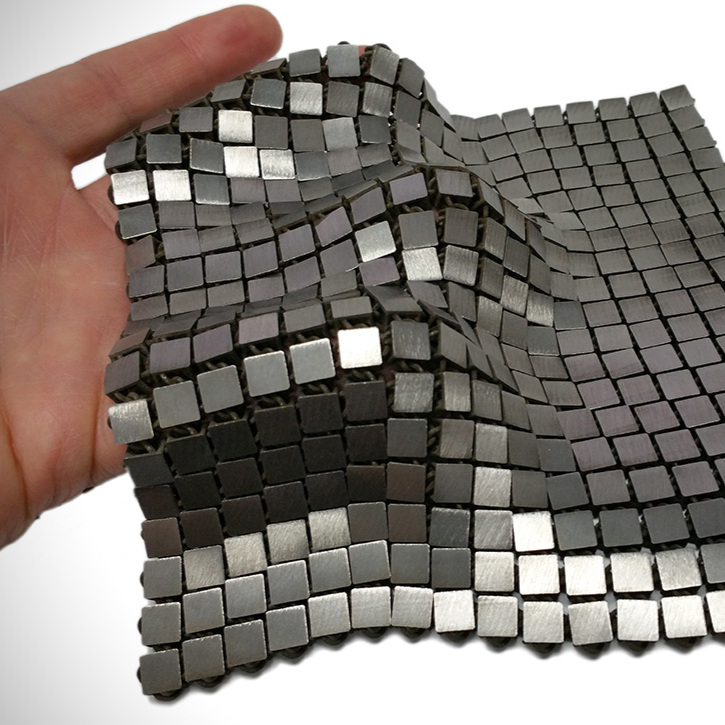 It’s a new technology in this field, so not many people know how and why to use it. Plus, the design of the clothes is complex: it requires knowledge of 3D modeling and 3D printing. But it’s also a new way to visualize the artwork more realistically.Until now, it has been confined to Haute Couture, artists, and passionate hobbyists.
It’s a new technology in this field, so not many people know how and why to use it. Plus, the design of the clothes is complex: it requires knowledge of 3D modeling and 3D printing. But it’s also a new way to visualize the artwork more realistically.Until now, it has been confined to Haute Couture, artists, and passionate hobbyists.
As we expected, the knowledge and enthusiasm are spreading worldwide, and there are many examples also in the mass fashion market. Other than accessories, 3D printing is used more for shoes, bags, and functional clothes. Also, NASA has its research laboratory where scientists study how to upgrade spacesuits with 3D printing.
Flexible filament
The materials that suit the creation process of 3D printed clothes are those with flexible features. TPU is the most used filament to create objects that need to be in contact with skin because it adapts its shape to body curves. So it is widespread in medical and fashion fields.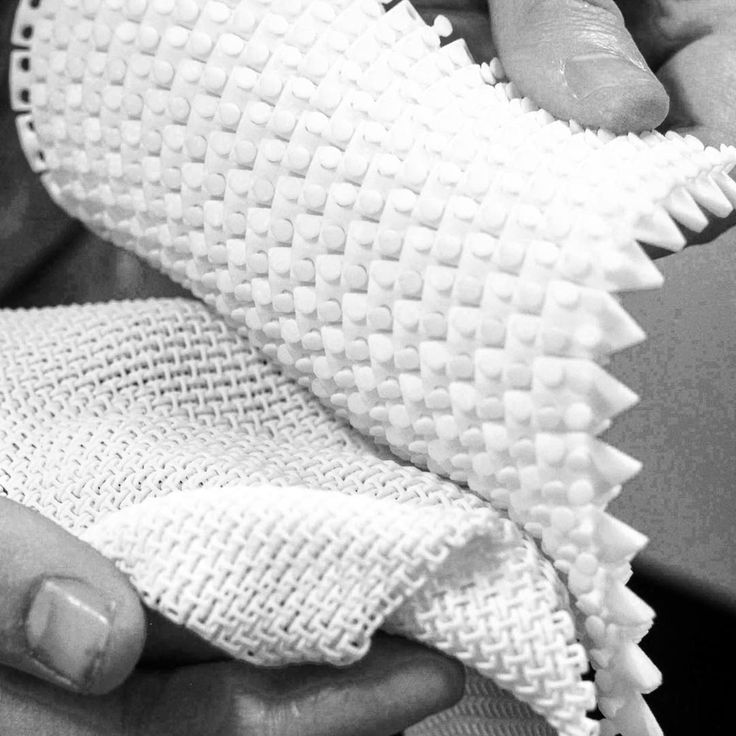 For example, Balenciaga released new pair of 3d printed decolletè, all made in transparent TPU.
For example, Balenciaga released new pair of 3d printed decolletè, all made in transparent TPU.
Haute couture: Iris Van Herpen
Iris Van Herpen is for sure one of the most iconic example of 3d printed artworks in fashion industry. Her stunning dresses are famous worldwide, worn by actors and singers in gran galà and other important events. Her creations are unique pieces, like sculptures.
She has always combined art and technology, inspired by Leonardo Da Vinci mindset. Nature is her biggest counselor and all colors and shapes combinations come from animals and plants. This interest in nature and eco-systems leads Iris to care about sustainability and the purpose to create pieces environment-friendly.
Fashion and sustainability
Sustainability is one of our generation’s battles: choosing the suitable materials to produce in a more respectful way for the planet. Fashion is under pressure for the continuous turnover of new clothes production every season.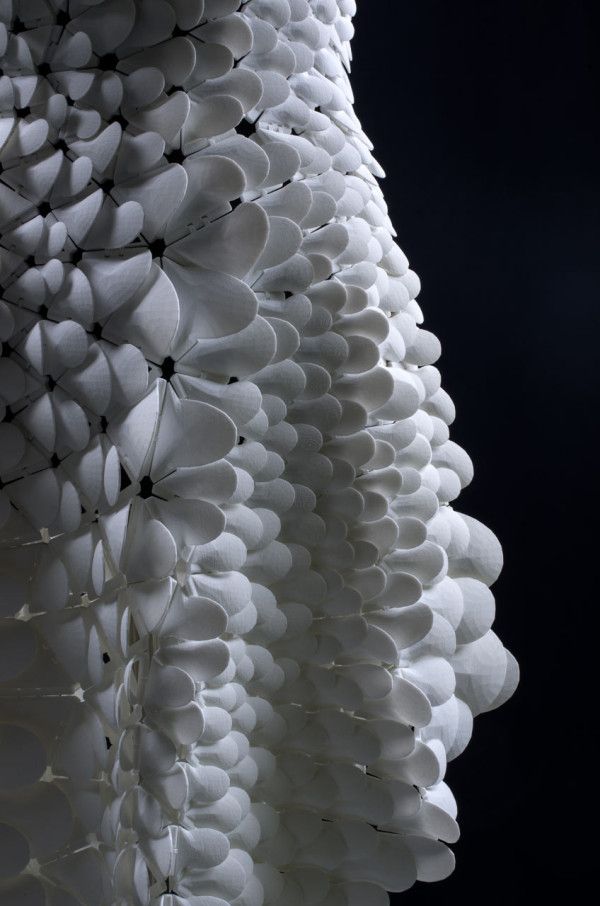
Fast fashion is one of the problems of these times, so everybody is now focused on trying to reduce the impact of the industry. 3D printing is a valid partner to face it because it permits avoiding waste of materials and can use recycled materials.
A student creates her 3D printed fashion line
Milan-based student of Politecnico di Milano, Chiara Giusti, has designed and produced a clothing line for her University project. She printed her collection at Superforma, Milan WASP Hub, using WASP’s large-scale 3D printer 3MT.
Chiara aims to create fashion and comfortable clothes, adding complex 3D printed patterns to textiles. This example demonstrates that 3D printing clothes can be done by everyone simply at home (with a little bit of practice).
Art, design and architecture
3D printing on textile is interesting to create something to wear, but it can also be a way to build remarkable structures and furniture pieces.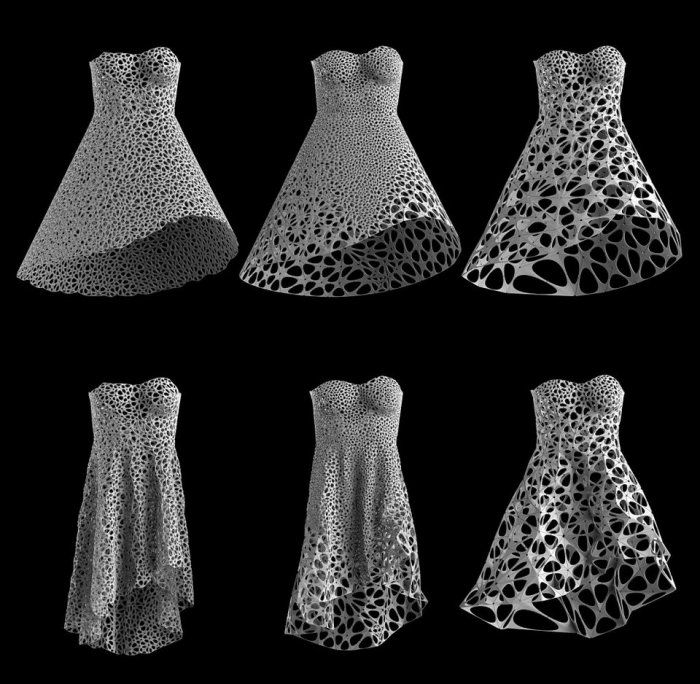 The rigidity that 3D printed curves bring to the textile creates a steady system that can sustain itself.
The rigidity that 3D printed curves bring to the textile creates a steady system that can sustain itself.
The shapes created on fabric are also interesting for furniture pieces like lamps. In these examples, created by Drag and Drop Design studio, emerges the structure and the articulate shape achievable with this process.
This large-scale piece exemplifies how 3D printing on fabric can also be applied to significant structures and challenge how we build installations and structures. This effect of soft spikes comes from the tensions of printed layers on the textile.
Large scale 3D printer
Delta WASP 3MT INDUSTRIAL 4.0All these masterpieces have been created with the 3MT 3D printer. This is the best printer for creating medium-large pieces thanks to its wide printing bed area of 1m in diameter.
Direct-to-Textile 3D Printing - Stratasys
Since its unveiling at New York Fashion Week last fall, the ability to 3D print directly onto fabric has drawn significant interest from the world of high-end fashion. Exemplified by the works of fashion designers threeASFOUR and Travis Fitch on NYFW’s catwalk, this technological milestone gave the world a preview of what fashion design could look like when combining the geometric and aesthetic freedom of 3D printing with the comfort of fabric.
Exemplified by the works of fashion designers threeASFOUR and Travis Fitch on NYFW’s catwalk, this technological milestone gave the world a preview of what fashion design could look like when combining the geometric and aesthetic freedom of 3D printing with the comfort of fabric.
Since then, Stratasys has been working closely with a number of household fashion brands to optimize its novel PolyJet Technology™ to meet the needs of modern-day apparel fabrication and make customized fashion design commercially viable.
As the company works towards this goal, Stratasys is proud to reveal today two collaborative works with esteemed fashion designers Julia Koerner and Ganit Goldstein. The works form part of Re-FREAM, a collaborative research project funded by the European Union bringing together artists, designers, engineers and scientists to co-explore the use of technology and 3D printing for the future of fashion.
ARID Collection – Julia Koerner.
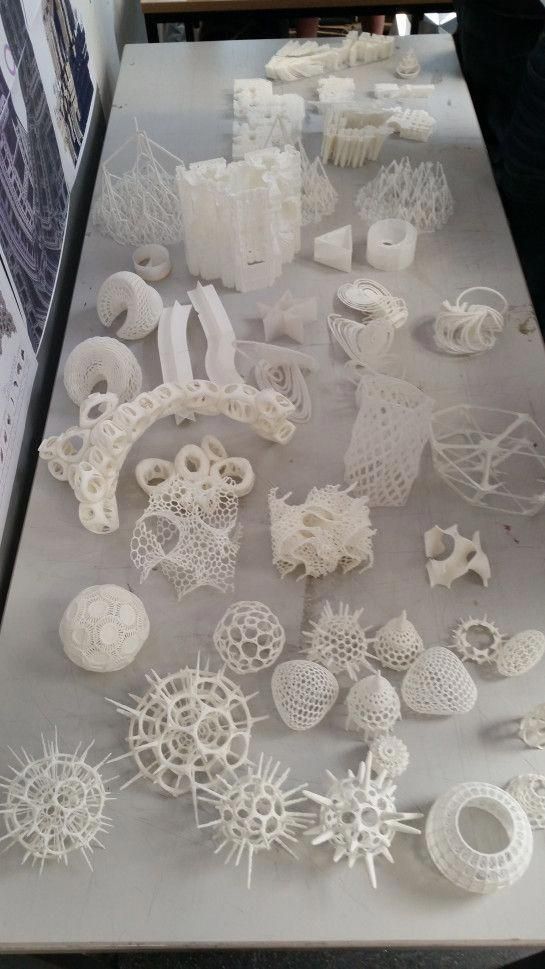
At today’s virtual ARS Electronica Festival, Koerner unveiled her latest collection: ARID. The works are built on research focusing on digital processes from 2D to 3D for nature-inspired geometries and the connectivity and adaptability of textiles with multi-color 3D-printed parts – with an underlying focus on material efficiency and sustainability.
ARID amalgamates this research into a collection of 38 3D-printed parts that can be combined to form a full-dress, or cascade into a number of different looks and combinations. Using Stratasys’ PolyJet Technology, the digital designs were 3D printed directly onto sustainable fabrics in vivid colors, creating an enigmatic shimmer effect when the garment is in motion, while maintaining the comfort and wearability of fabric garments.
The collection also allows for the easy adaption of personalized sizes through modified 3D printed connectors, which are derived from 3D scans of the wearer.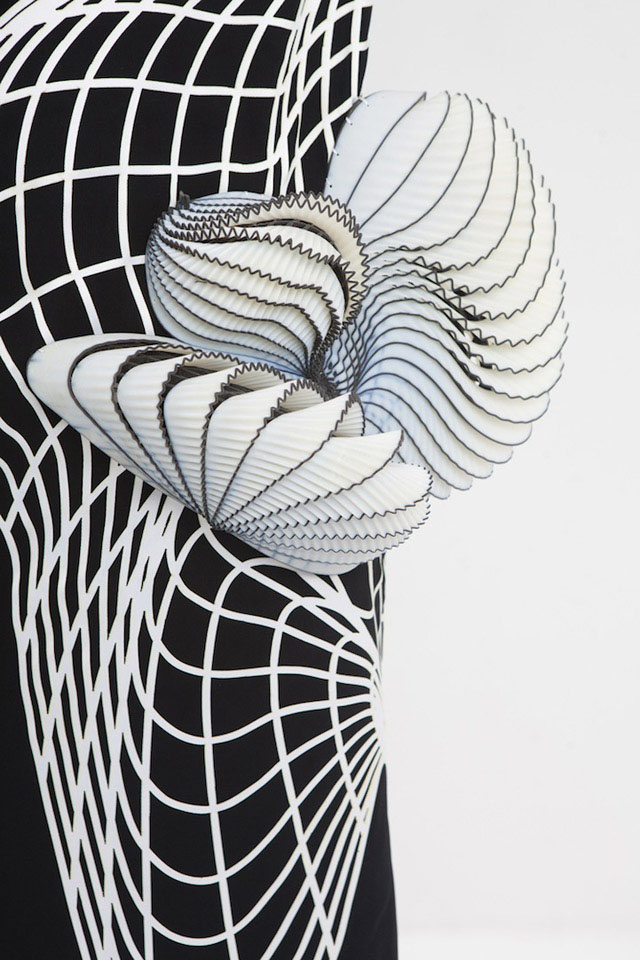 There is no sewing involved in the final assembly of the parts. Instead, all seams are connected with 3D printed joinery, which is the first time 3D printed connectors have ever been used in the assembly of textiles.
There is no sewing involved in the final assembly of the parts. Instead, all seams are connected with 3D printed joinery, which is the first time 3D printed connectors have ever been used in the assembly of textiles.
Customized Design – Ganit Goldstein.
Goldstein teamed up with Stratasys to achieve her mission of customized fashion design by combining craft methods with direct-to-textile 3D printing to produce a Japanese-style dress (see video here).
“Looking at the fashion world today, I want to introduce a new way of manufacturing – moving away from mass production to customized design,” says Goldstein. “3D printing has always offered the potential to personalize design in ways not possible before, but to truly create a new way to manufacture requires a new kind of textile.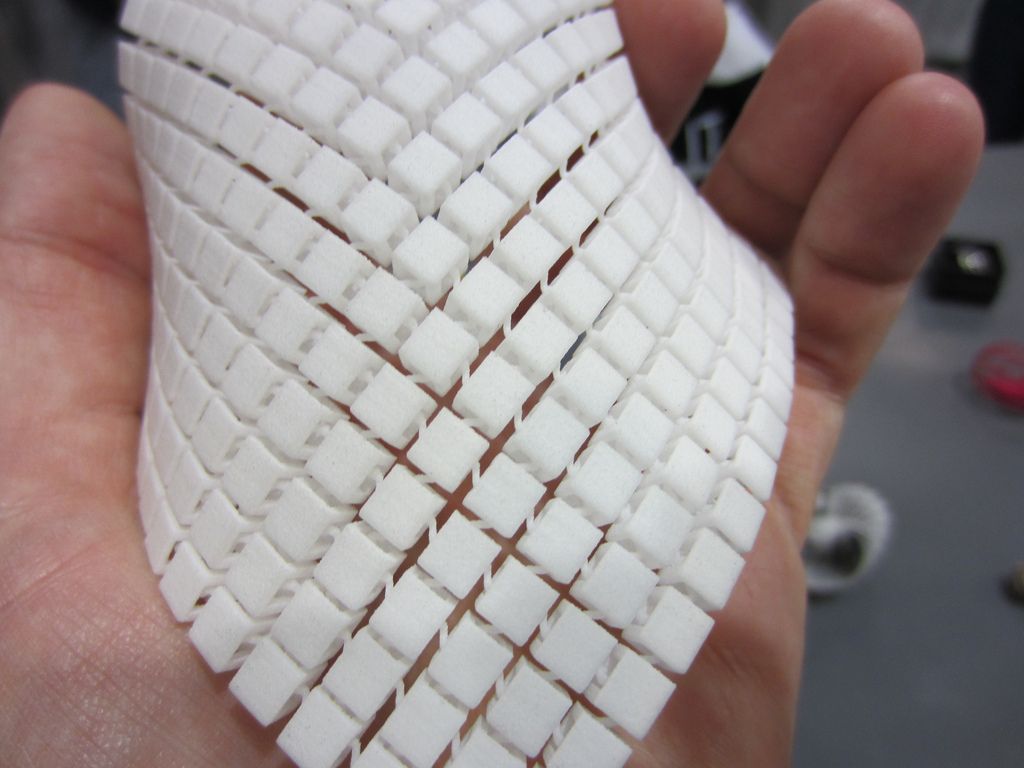 My goal is to create a new hybrid world of crafts and multi-color 3D printing – connecting past, new and future techniques to evolve fashion design.”
My goal is to create a new hybrid world of crafts and multi-color 3D printing – connecting past, new and future techniques to evolve fashion design.”
Goldstein spent a year in Japan to learn interweaving and was inspired by Asian craft embroidery and textile painting. Her kimono design follows the Japanese ‘ikat’ coloring method. While Japanese embroidery is the soul of the project, direct-to-textile multi-color 3D printing is at the heart of it. The kimono follows an algorithm that is composed on the 3D body scan and translated to the print surface during the printing process.
For the first time in 3D printed fashion, textiles can be leveraged as the skeleton of the garment. This allows for extra movement within the fabric, but also enables full gain between the capacity and material thickness that is printed on top of the fabric. This enables designers to bring unique designs to market that are not possible in any other way. It also challenges Stratasys to take the technology to places it’s not been before to support the emerging demand for direct-to-textile printing.
“In fashion, it’s important that we continually optimize and evolve to introduce new design forms,” says Goldstein. “During the past year, I experimented with numerous different fabrics and technologies to incorporate 3D printing within textiles. Achieving this milestone takes us away from 2D design and opens up a world of wearable 3D garments.”
Koerner and Goldstein leveraging Stratasys’ direct-to-textile printing technology exemplifies Re-FREAM’s goal of fully digitizing design workflows – from design through to production. In doing so, it demonstrates the possibility for localized manufacturing and mass customization – regarded by many as the future of fashion.
As Goldstein attests to in her video, direct-to-textile 3D printing has the potential to be a game-changer for the fashion industry. With the commercial interest in this innovative technique already at an advanced stage and pilot-testing underway, it may not be long before potential becomes reality.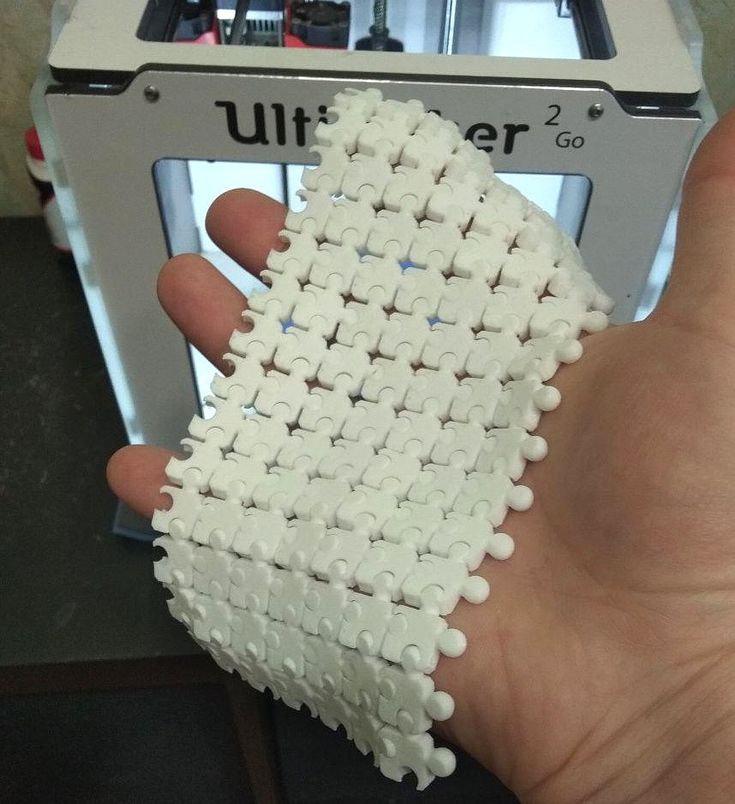
To find out more about the latest developments from Stratasys in design and fashion, check out the latest podcast from The Artian featuring Stratasys Creative Director for Art, Design, and Fashion, Naomi Kaempfer.
3D printing on fabric - technology features. Methods for applying three-dimensional images to fabric, phone cases, promotional products
Today, 3D printing on fabric is a fairly popular way to create exclusive items. This type of drawing, due to the visual volume and realism, easily attracts attention, which means that it will be in demand among people of different ages for a long time to come.
You can apply 3D drawings on different types of textiles, namely:
- On natural fabrics.
- For synthetic fabrics.
- For tarpaulin.
This type of print is also often used for large format printing, for example, for wallpapers, theatrical scenery or exhibitions.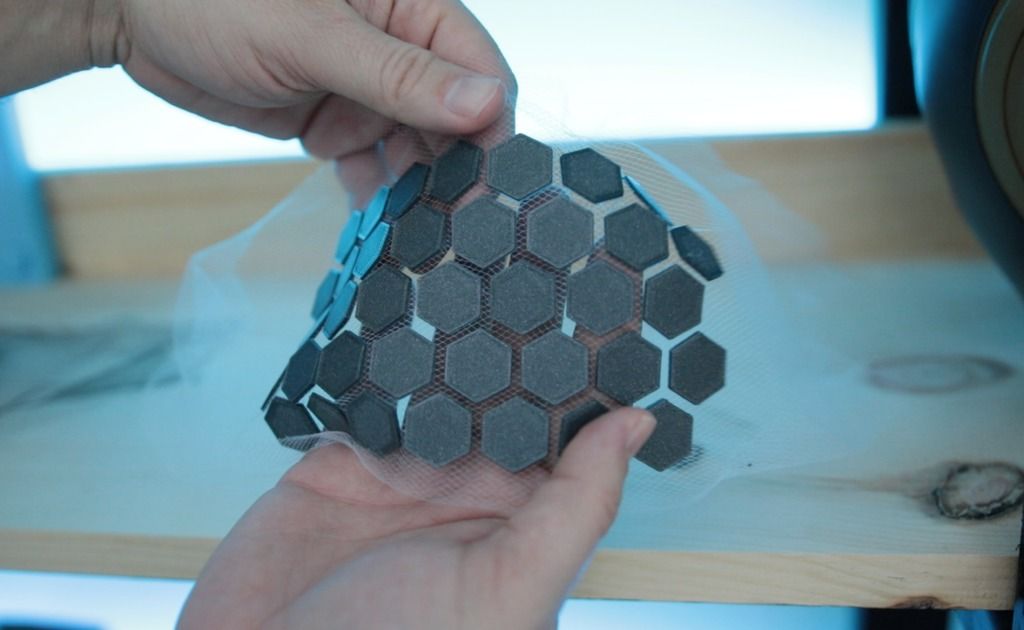 The range of use and application of this type of image is great, it would be a fantasy.
The range of use and application of this type of image is great, it would be a fantasy.
3D wallpapers can transform any space
For example, 3D printing on phone cases has also become a fairly popular service among the population.
3D printing on fabric
In order for 3D printing to be applied by the desired method and the image to be bright and durable, it is necessary to take into account a number of factors when choosing the fabric on which the pattern will be applied. Namely, you need to pay attention to:
- Material composition.
- Structure.
- Density.
- Processing.
- Storage conditions for textiles.
Fabrics can be of textile and knitted weaving. Materials with textile weaving - jeans, linen, silk, velveteen, satin, and with knitted - footer, cooler, interlock, etc.
3D printing is an original way of applying high-quality images of any complexity to fabrics or clothes. Thanks to the latest printing technologies, such designs will perfectly behave after numerous washings and ironings. The main thing is to choose the right transfer method for the image.
Thanks to the latest printing technologies, such designs will perfectly behave after numerous washings and ironings. The main thing is to choose the right transfer method for the image.
There are several technologies for applying images of this type to textiles:
- Digital printing. The image is applied directly to the fabric, without the use of additional media.
- Sublimation. A special dye is used that penetrates the fibers without changing the properties of the material.
- Screen printing. Drawing is applied through a special stencil by pushing paint, viscous consistency.
- Thermal transfer printing. Used film or paper, high temperature and heat press.
All of these 3D printing methods have their pros and cons. For example, digital printing is most often used because of its inexpensive cost, and the silk-screen printing method makes the image durable even on rough fabrics. But the sublimation method limits the client in the choice of fabric, as it is applied only to synthetic materials, but the colors of the image will remain for a long time. So if you need a print on a product that will not lose its appearance for a long time, then it is better to choose a sublimation printing method on a synthetic or semi-synthetic canvas.
But the sublimation method limits the client in the choice of fabric, as it is applied only to synthetic materials, but the colors of the image will remain for a long time. So if you need a print on a product that will not lose its appearance for a long time, then it is better to choose a sublimation printing method on a synthetic or semi-synthetic canvas.
3D printing on fabric and not only from PROpechat
Today, few people do not know what 3D printing is. Images of this type can be used for different purposes due to the originality of the result.
For example, it is practical and profitable to use this type of pattern for advertising purposes to attract customers - printing a three-dimensional image of the company logo will clearly attract potential buyers or partners. So the considered option of applying a print is not only a way to transfer pictures, but also an excellent method of promoting a business.
And so, we draw conclusions.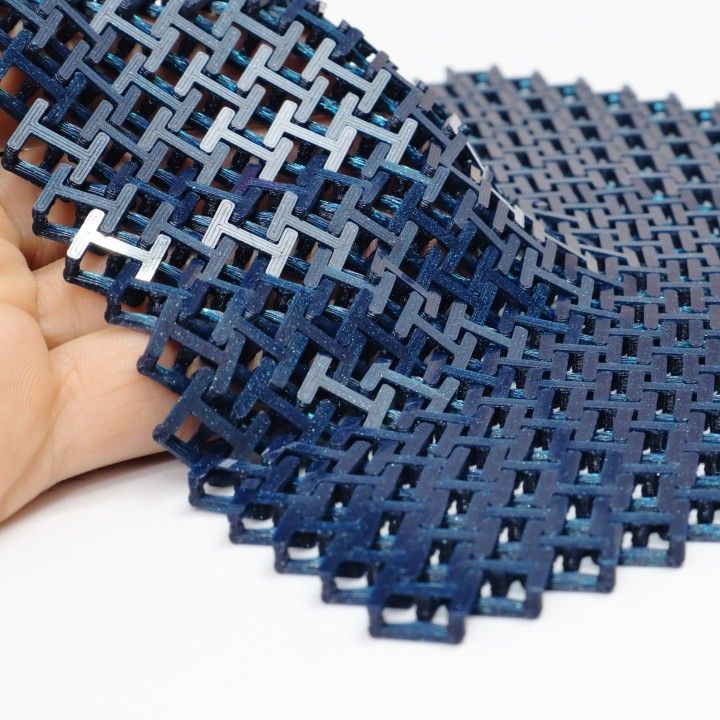 In order for the image to turn out as realistic and durable as possible, it is necessary to take into account only a few components:
In order for the image to turn out as realistic and durable as possible, it is necessary to take into account only a few components:
- Choice of 3D printing technology.
- Selection of the material on which the image will be applied.
- Scope of the finished product.
3D printing on fabric and more is a great way to make an original piece of furniture, a souvenir, promotional items, etc. So turn on your imagination and act. Have questions? Call us right now or contact the manager online!
Irregularity of 3D printing made it possible to create a plastic analogue of fabric
American engineers have learned how to print mesh structures on a 3D printer, which are similar in structure and properties to fabric. They are obtained when the material exits the printer extruder unevenly. The method allows you to create a "fabric" structured on different scales, designed for different applications, say the authors of an article presented at the UIST 2020 conference.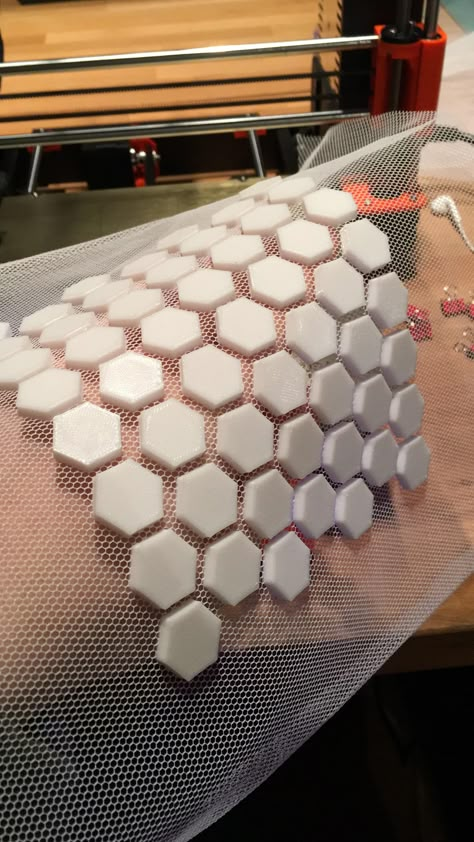 on the other hand, it can be stretched, bent or wrinkled without damage. Engineers not only improve the properties of fabrics and weaving methods, but also try to create materials with similar properties, but with a different composition and structure. Some of them propose to create an array of randomly oriented fibers, others create hybrids with a woven base and inserts printed on it, others directly repeat the woven fabric structure using only 3D printing.
on the other hand, it can be stretched, bent or wrinkled without damage. Engineers not only improve the properties of fabrics and weaving methods, but also try to create materials with similar properties, but with a different composition and structure. Some of them propose to create an array of randomly oriented fibers, others create hybrids with a woven base and inserts printed on it, others directly repeat the woven fabric structure using only 3D printing.
MIT engineers led by Hiroshi Ishii have developed a simpler method. It is based on the classic and most popular type of 3D printing - FDM or Fused Deposition Modeling. In this method, the printer's print head melts the filament and extrudes the melt through a nozzle, applying it to the substrate or previous layer. One of the features of the method is that the quality of application and retention of the material depends on its viscosity and extrusion volume. With some combinations of parameters, the application becomes uneven.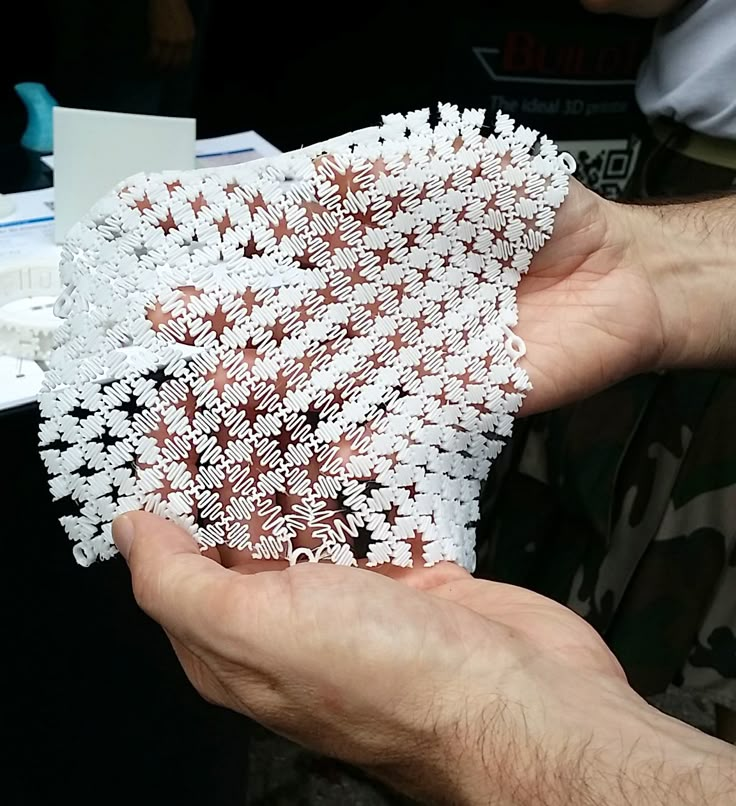 In particular, with a low extrusion volume, a series of bumps can form, connected by a thread that does not touch the previous (lower) layer.
In particular, with a low extrusion volume, a series of bumps can form, connected by a thread that does not touch the previous (lower) layer.
The authors decided to use this application mode to create a network structure, somewhat reminiscent of fabric. As a material, engineers used various substances, mainly PLA plastic. They conditionally compare the line passing through the tubercles with the warp, and the line formed by thin threads with the weft by analogy with the same structural elements in weaving. Depending on the order in which the layers are applied, the structure is different. If the direction of each next layer is the same as that of the previous one, then the base in each next layer shifts to the side. And if the direction of the layers alternates, then the structure is even.
The difference between the new type of material and the fabric is that it can be created not only flat, but also voluminous.